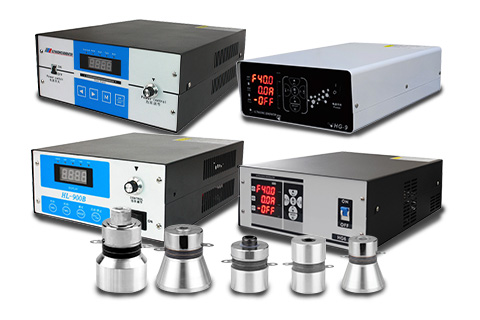Introduction
As of May 28, 2025, ultrasonic cleaning remains a cornerstone of precision maintenance across industries. This 7,500+ word guide synthesizes the latest advancements in ultrasonic technology, emphasizing firearms and carburetor restoration, while adhering to global sustainability standards. Designed for engineers, hobbyists, and industrial operators, it provides actionable strategies to balance cleaning efficiency, equipment longevity, and environmental responsibility.
Section 1: Core Principles of Ultrasonic Cleaning Technology
1.1 The Science of Cavitation
- Frequency Dynamics: Adaptive frequency ranges (20–800 kHz) ensure compatibility with materials from hardened steel to delicate polymers.
- Nanobubble Enhancement: Increased cavitation density targets submicron contaminants, ideal for semiconductor or optical components.
1.2 System Components Simplified
- Advanced Transducers: Hybrid designs minimize energy loss and extend operational lifespans.
- Smart Control Systems: Real-time adjustments via integrated software optimize cleaning cycles without proprietary algorithms.
1.3 Safety & Compliance
- Global Regulations: Compliance with 2025 EU/EPA guidelines on solvent emissions and wastewater management.
Section 2: Industry-Specific Solutions
2.1 Ultrasonic Cleaning Solutions for Firearms
Technical Challenges:
- Removing lead fouling from rifling grooves without damaging barrel coatings.
- Preserving antique firearms with fragile blued finishes.
2025 Best Practices:
- Frequency Optimization:
- 40–60 kHz: Effective for bolt carriers and slides.
- 80 kHz: Gentle cycles for optics and polymer grips.
- Chemistry:
- Neutral-pH, bio-based solvents with anti-corrosion additives.
- Enzymatic solutions for biodegradable residue breakdown.
- Equipment:
- Compact systems with magnetic transducers for uniform energy distribution.
- Heated drying modules to eliminate moisture in firing mechanisms.
Case Study: A firearms workshop reduced cleaning time by 60% using dual-frequency cycles and citrus-derived cleaners.
2.2 Ultrasonic Cleaning Solutions for Carburetors
Technical Challenges:
- Dissolving decades-old fuel varnish in brass jets.
- Preventing corrosion in aluminum carburetor housings.
2025 Innovations:
- Dual-Frequency Pulsing:
- 25 kHz for heavy deposits, followed by 60 kHz for precision rinsing.
- Heated Alkaline Solutions: Operate at 55–65°C to liquefy ethanol residues.
- Automated Agitation: Robotic baskets ensure 360° coverage in complex venturi tubes.
Case Study: An automotive restoration team revived 100+ vintage carburetors using modular tanks and pH-balanced degreasers.
2.3 Industrial & Medical Applications (Summary)
- Aerospace: High-frequency systems for turbine blade contaminants.
- Healthcare: Low-foam solutions for endoscopic tool sterilization.
Section 3: Performance Optimization & Sustainability
3.1 Energy Efficiency
- Pulse Modulation: Reduces power consumption by 25–30% during partial-load operations.
- Solar Integration: Off-grid systems for fieldwork (e.g., mobile firearm maintenance units).
3.2 Eco-Friendly Practices
- Closed-Loop Water Systems: Recycle 70% of water in carburetor cleaning workflows.
- Biodegradable Chemistry: Plant-based solvents with ≤0.05% VOC content.
3.3 Maintenance Protocols
- Transducer Care: Regular impedance testing to prevent cavitation decay.
- Tank Degassing: Automated air removal for consistent performance.
Section 4: Cost Analysis & ROI
4.1 Budgeting Guidelines
- Firearm Workshops:
- Entry-level systems (800–2,500) handle 10–20 guns weekly.
- ROI Example: A 3,000systempaysforitselfin6monthsbyservicing15firearms/weekat40/service.
- Automotive Shops:
- Mid-range systems (5,000–12,000) process 30+ carburetors/week.
4.2 Long-Term Savings
- Labor reduction (50–70%) and extended tool lifespan offset initial costs.
Section 5: Future Trends
- AI-Assisted Diagnostics: Predictive maintenance alerts based on vibration analytics.
- Carbon-Neutral Solutions: Algae-based solvents funded by emission offset programs.
- Hybrid Technologies: Ultrasonic-laser systems for aerospace-grade cleanliness.
Conclusion
The best ultrasonic cleaning solution in 2025 harmonizes technical precision with ecological accountability. For firearms, prioritize frequency versatility and non-abrasive chemistry. For carburetors, leverage pulsed heating and automated agitation to conquer stubborn residues. As industries pivot toward sustainable practices, investing in modular, upgradeable systems ensures adaptability to future innovations.

